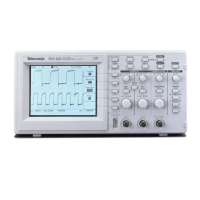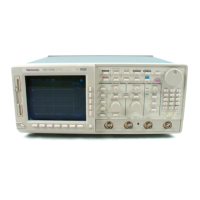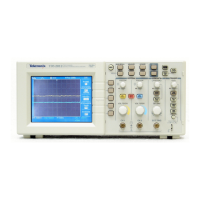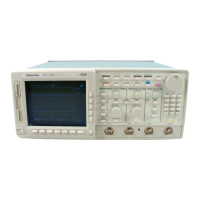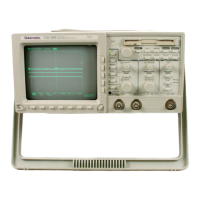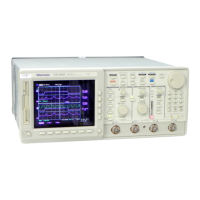Waveform Differentiation
3–134
TDS 420A, TDS 430A, TDS 460A & TDS 510A User Manual
When using the vertical scale knob to scale the source waveform, note that it
also scales your derivative waveform.
The derivative math waveform may be too large vertically to fit on screen —
even if the source waveform is only a few divisions on screen. You can use
Zoom to reduce the size of the waveform on screen (see Zoom that follows), but
if your waveform is clipped before zooming, it will still be clipped after it is
zoomed.
If your math waveform is a narrow differentiated pulse, it may not appear to be
clipped when viewed on screen. You can detect if your derivative math wave-
form is clipped by expanding it horizontally using Zoom so you can see the
clipped portion. Also, the automated measurement Pk-Pk will display a clipping
error message if turned on (see Automated Measurements of a Derivative
Waveform on page 3–132).
If your derivative waveform is clipped, try either of the following methods to
eliminate clipping:
Reduce the size of the source waveform on screen.
Expand the waveform horizontally on screen. For instance, if you display the
source waveform illustrated in Figure 3–73 on page 3–132 so its rising and
falling edges are displayed over more horizontal divisions, the amplitude of
the corresponding derivative pulse will decrease.
Whichever method you use, be sure Zoom is off and the zoom factors are reset
(see Zoom below).
Once you have your waveform optimally displayed, you can also magnify (or
contract) it vertically and horizontally to inspect any feature. Just be sure the
differentiated waveform is the selected waveform.
If you wish to see the zoom factor (2X, 5X, etc.), you need to turn zoom on (see
Zoom on page 3–143).
Zoom
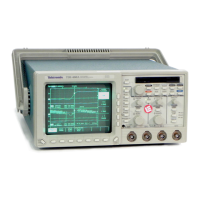
